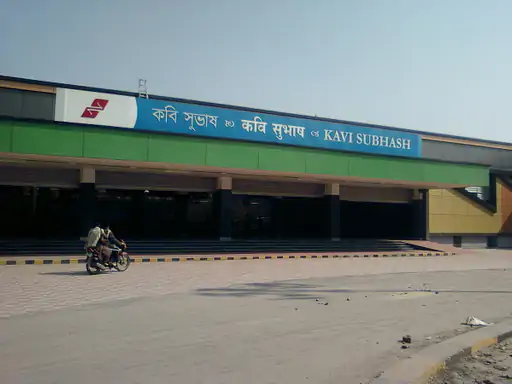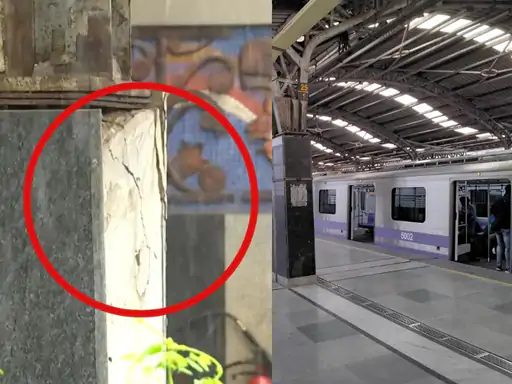Following record-breaking rainfall on July 28—the heaviest in the last five years—cracks were discovered in four load-bearing columns (numbered 11, 16, 17, and 20), suspected to have been caused by foundation subsidence due to uneven ground settlement. As a precautionary measure, all passenger services to and from Kavi Subhash station were immediately suspended at 12:45 p.m. on that day. Since then, Metro services on the Blue Line are operating uninterrupted only between Shahid Khudiram and Dakshineswar stations.
A formal assessment by engineering consultancy firm RITES Ltd led to the decision to rehabilitate the Up platform through partial dismantling and full reconstruction. According to the Metro Railway’s statement, the restoration plan includes removal of the platform’s roof truss and sheeting, demolition of compromised columns and slabs, and rebuilding the structure. The entire project is expected to take nine months to complete, with the tender process already underway and work set to begin on a “war footing.”
In the meantime, the Kavi Subhash–Ruby Crossing segment on the Orange Line remains fully operational, and empty metro rakes are still being moved to Kavi Subhash for reversal and maintenance purposes. However, public access to the terminal station has been completely halted.
This marks the first time in Kolkata Metro’s history that a station is being dismantled due to structural failure, raising pressing questions about the quality of design, construction standards, and maintenance protocols. According to a Metro Railway spokesperson, the remaining 25 stations on the North-South line have been deemed structurally sound.
The sudden closure has created immense inconvenience for thousands of daily commuters, particularly those who use the Kavi Subhash terminal as a junction point to connect with Sealdah South Branch trains. With no alternative transport arrangements or replacement services in place, passengers are being forced to walk long distances, with many expressing frustration at the lack of preparedness and poor crisis management.
Experts are skeptical about the official explanation attributing the cracks solely to recent rainfall. Professor Partha Pratim Biswas of the Engineering Department at Jadavpur University noted, “Such cracks do not appear overnight. They are typically the result of prolonged structural stress, rusting, or lack of regular maintenance.” He also pointed out that the area was once part of a wetland, which may have affected the soil’s bearing capacity—an issue that should have been accounted for during the initial planning phase.
The broader implications of the incident have sparked debate across the city, with urban planners, engineers, and the public questioning whether this failure was the result of natural forces or administrative negligence. Transport analysts argue that proper inspection, routine structural audits, and timely maintenance could have averted the crisis altogether.
As the Kavi Subhash terminal—once hailed as a vital lifeline for Kolkata’s southern suburbs—now becomes a symbol of infrastructural miscalculation, residents are left grappling with disrupted routines and an uncertain timeline for restoration. The Metro authorities have issued a public apology for the inconvenience and reiterated their commitment to safety and transparency during the rebuilding process.



